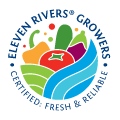Crisis Management

Eleven Rivers Certification Scheme v2.3
Axis 1. Process Quality
Headland 16. Crisis Management
1.16.1. Team of contingency management
In order for the company to face a crisis situation, it must integrate a contingency management team: commitment and active participation of the senior management and personnel are necessary. A multidisciplinary approach is required with experts in traceability, legal counselor, marketing and communication, depending on the type of contingency; also include personnel responsible for process quality, production, packaging, quality control, merchandising, maintenance and senior management (or lack thereof, by a representative appointed with decision-making capacity).
The company must prove that the personnel integrating the team of contingency management (health, natural, human, environmental and labor safety) is competent and have technical knowledge.
1.16.2. General contingencies
A contingency management program must be documented, in order to demonstrate the responsiveness of the company before a process interruption, that may occur due to natural disasters (storms, floods), lack of utilities (water, power), failures in industrial safety (chemical leaks, fire), labor contingencies, such as a workers’ strike.
The program must include an updated contact list, in case of emergency, and an internal and external communication procedure.
1.16.3. Contingency by pollution outbreak
If there is a food outbreak, a response must be made and avoid the spread of diseases through tracking, in order to withdraw the pollution source from the market.
In order to face the situation, a procedure must be developed and implemented, when the company and the products are being called as suspects of a pollution outbreak by authorities. The procedure must indicate the actions and responsibilities of the personnel involved and must prove that these personnel are aware of them.
Developing and implementing an internal research procedure, indicating the actions to correct deficiencies that may cause pollution outbreaks; also, include a communication procedure clearly describing who will be the spokespeople of the company before employees, media, consumers and the industry.
Having an updated list of buyers, organizations responsible for food safety in countries of origin and destination of production and essential contacts (such as the Eleven Rivers management, government institutions and independent organizations) which must be notified, in case of a pollution outbreak.
1.16.4. Product withdrawal
Documenting and implementing a procedure to withdraw polluted or pollution-suspicious product from the supply chain. This procedure will take into account various types of events:
- Inform the public about the problem, without withdrawing the product. This may occur when a product or agriculture region is marked for a pollution outbreak, but the company has not been directly called by authorities.
- Voluntarily withdraw the product of the supply chain to calm down consumers and keep their trust. This may occur in the same situation mentioned above, but assuming the costs of a voluntary withdrawal.
- Withdraw the product based on a request by authorities. This may be imposed by the authorities when the company is proved as the potential responsible for a pollution outbreak.
In the cases where a product withdrawal is implemented, the company must document the details of the measure taken and the destruction of the product affected.


